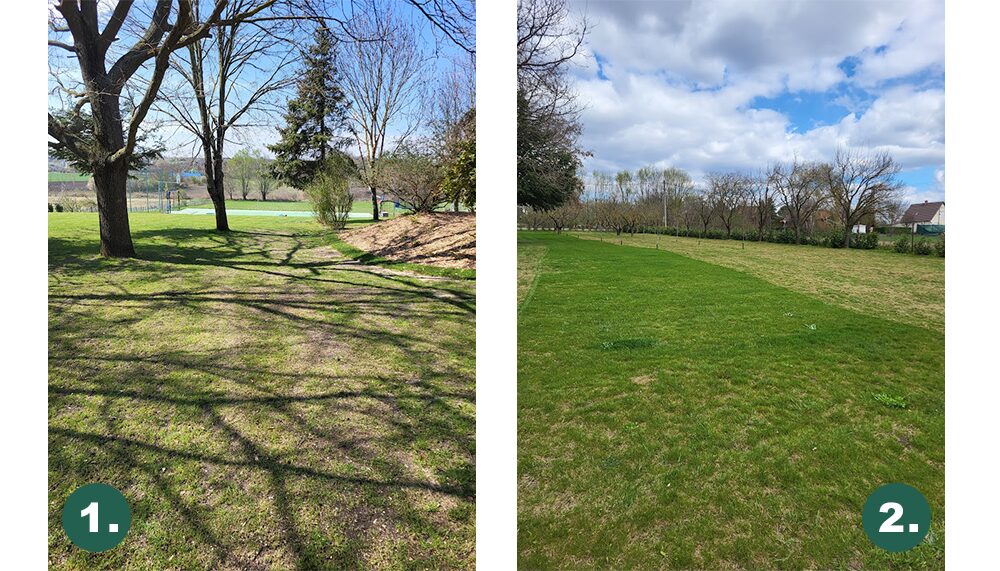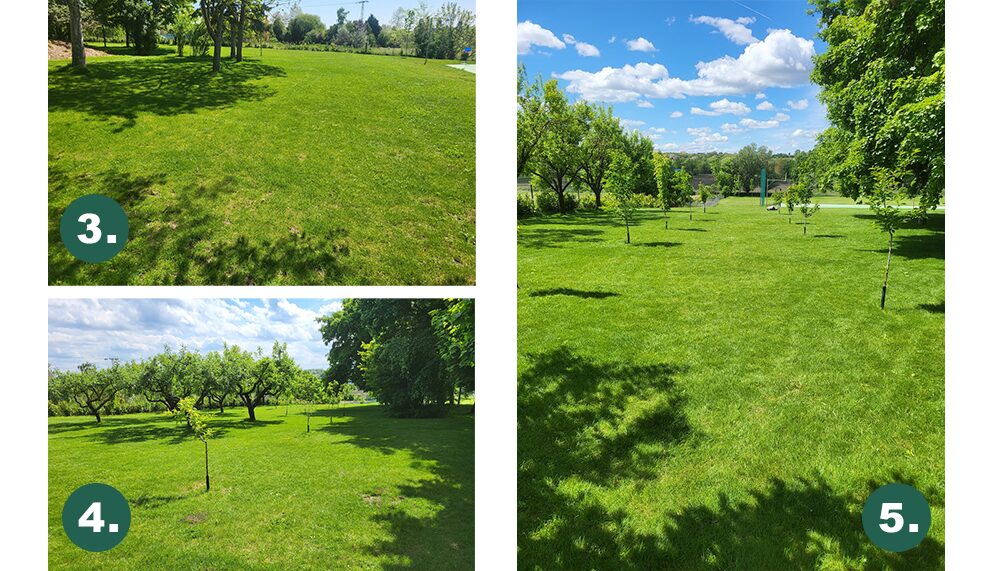
Tart Cherry (Debreceni bőtermő) — Kosd, Cselőte puszta 0274/6
Soil type: clay loam, binding index 42.
The Humikal Universal Classic granulate was applied on March 20, 2025, to the experimental plot, which was divided into three separate sectors. The first observations were carried out at flowering.
Based on measurements, trees in the treated plot had 0.6% more flowers, while fruit set was 3.87% higher compared to the control.
Already in the short period between application and fruit set, visible differences were observed, particularly in the intensity of shoot growth: preliminary measurements showed that average shoot length in the treated plot was 21% greater (Fig. 1).
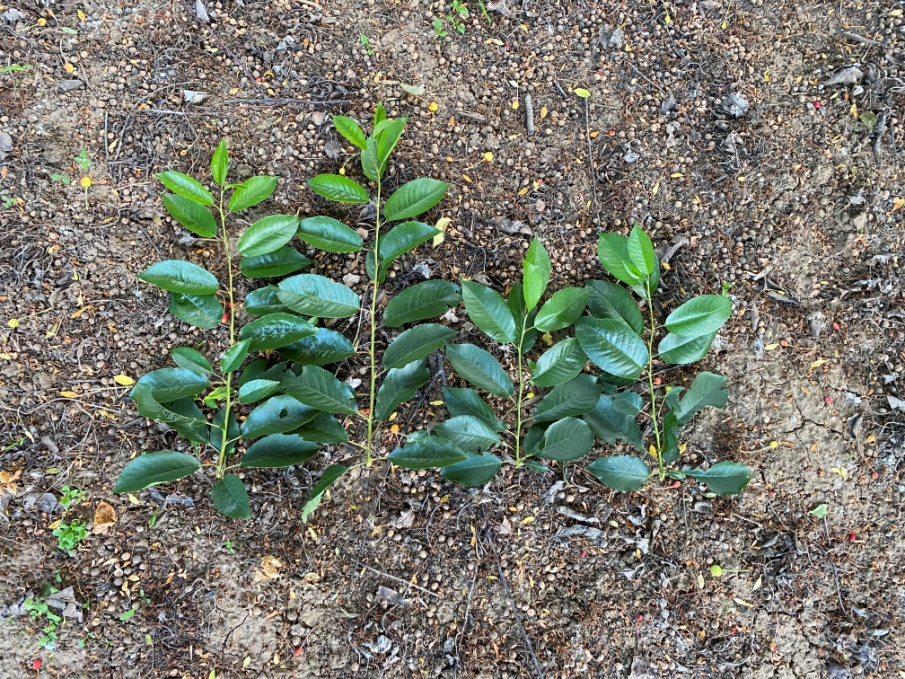
Photo: Left — treated plot; Right — control plot (Komáromi K., Kosd, 2025).
Fruit from treated trees was more uniform (Figs. 2–3). Average fruit diameter reached 22 mm in the treated plot, versus 19 mm in the control.
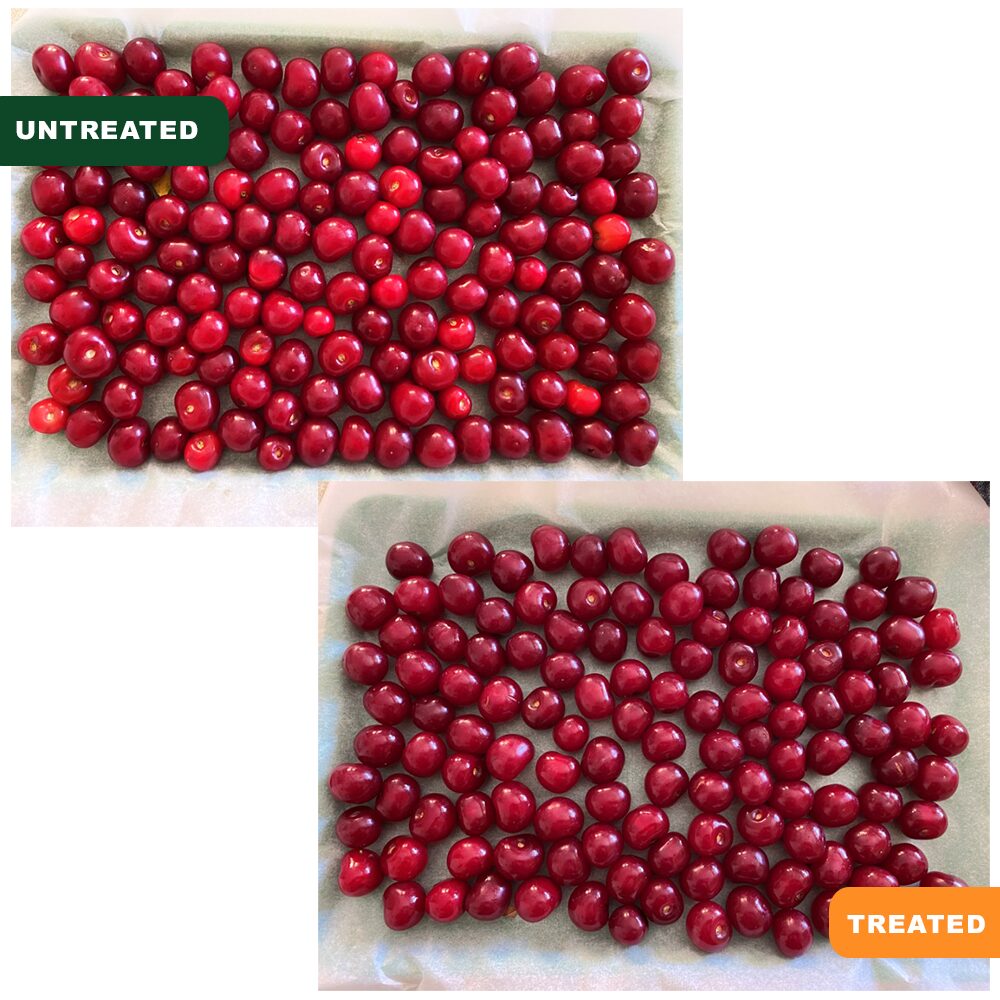
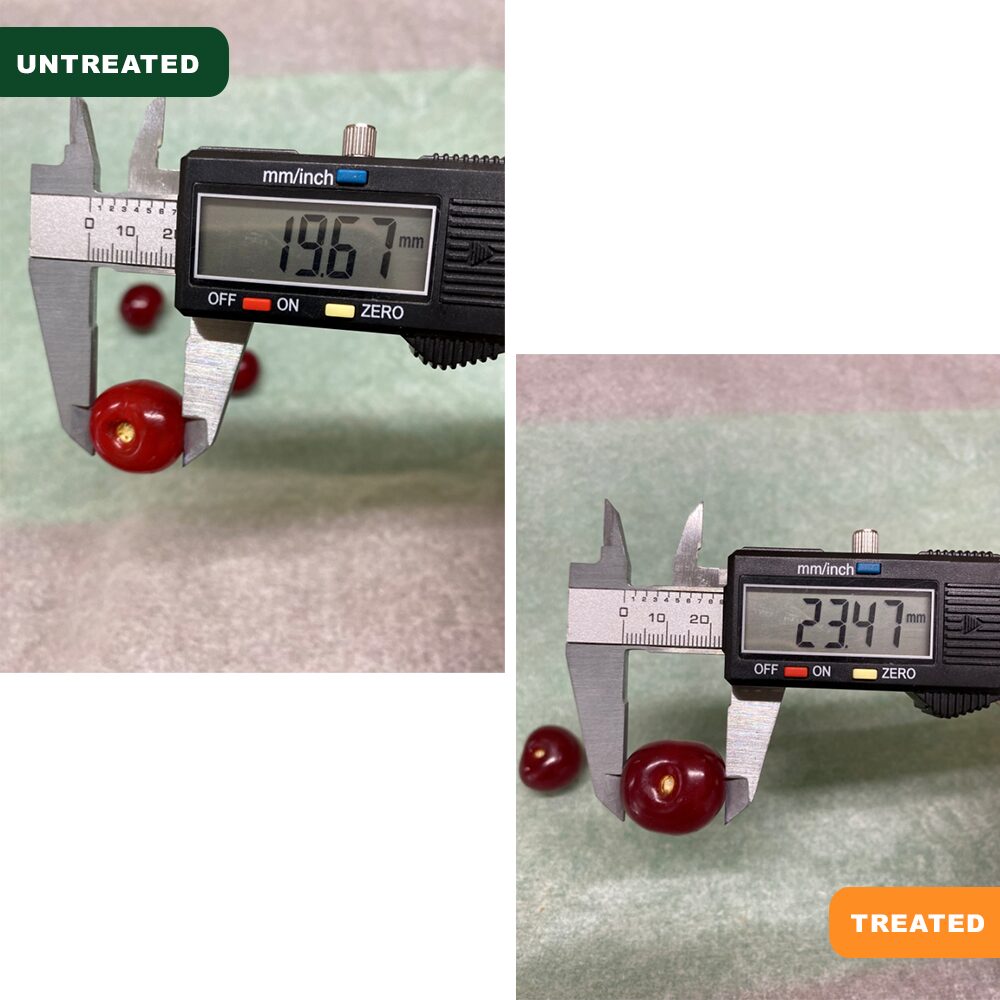
At harvest, average yield per tree was 15 kg in the treated plot and 11 kg in the control.
According to grading, the treated plot produced fruit of export quality, while the control was classified only for domestic processing.
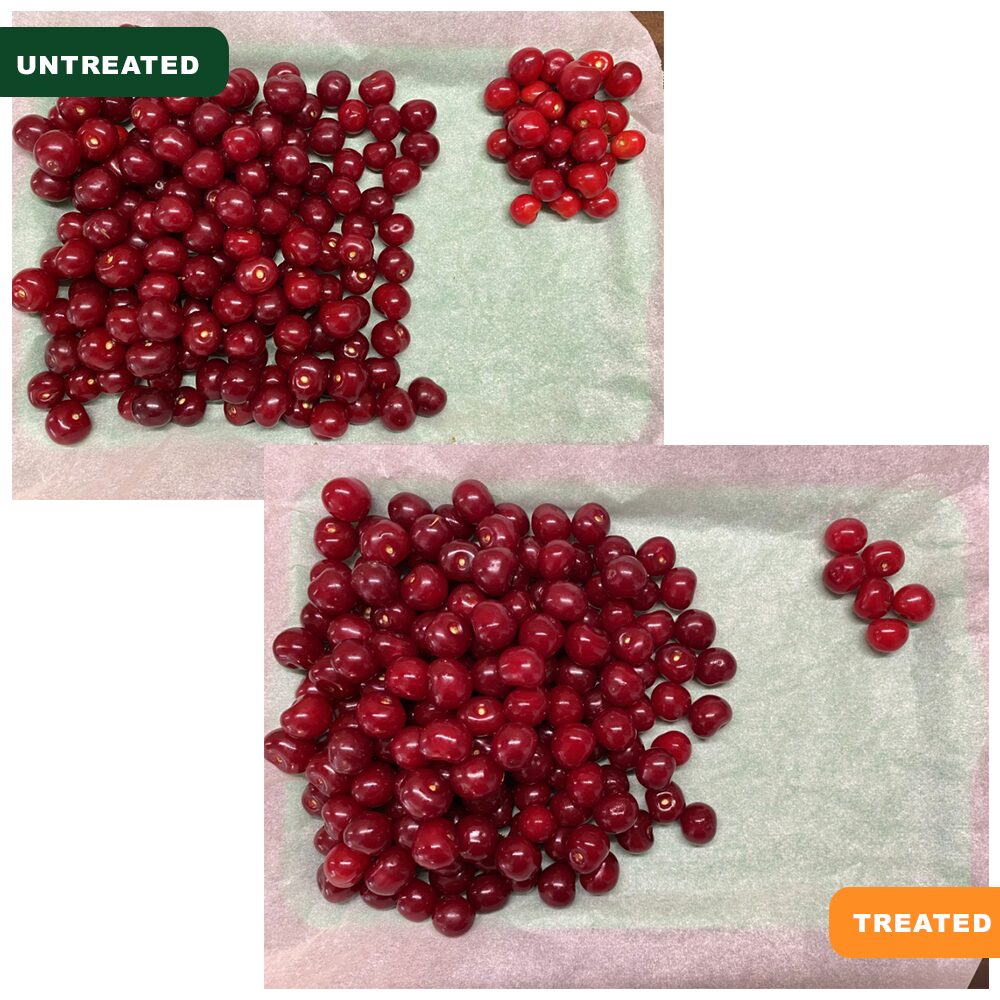
Nutritional analyses: Compared with the control (treated with urea), samples from the Humikal-treated trees showed more favorable nutritional parameters — particularly higher sugar and energy content, alongside lower moisture content. These shifts enhanced flavor intensity and increased dry matter content.
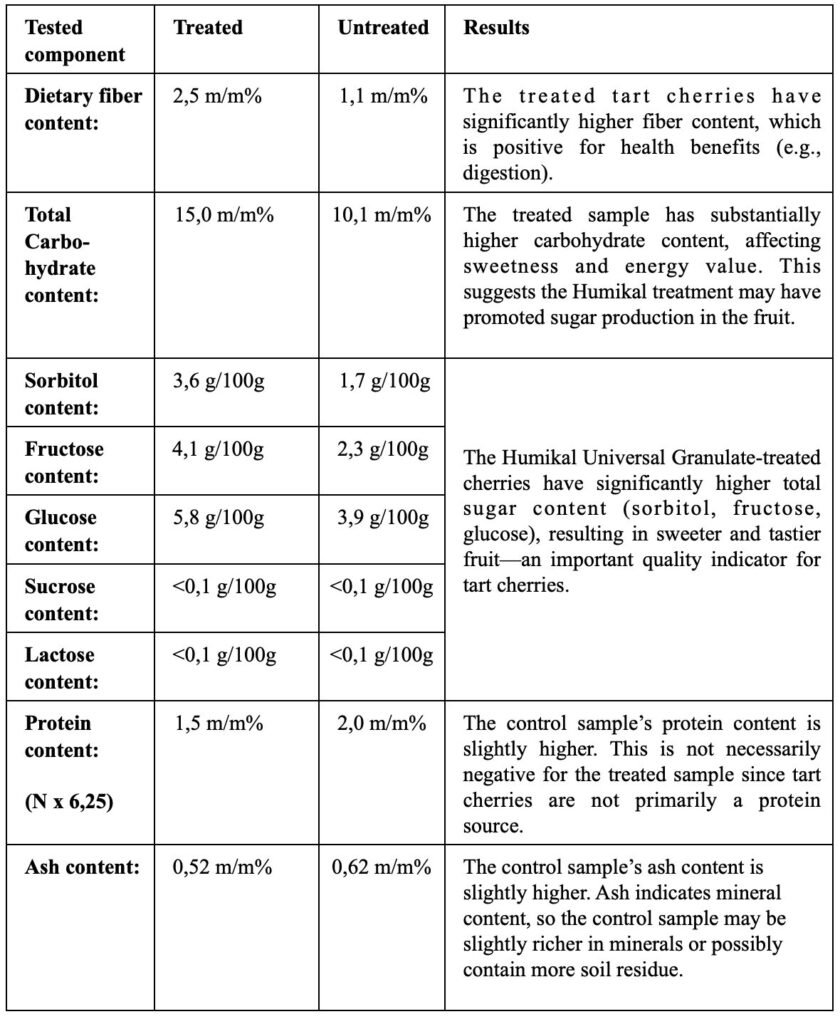
Key findings:
Conclusion: The results clearly demonstrate that Humikal Universal granulate improved both yield and quality in Debreceni bőtermő tart cherry compared to the control. The most significant improvements were observed in sugar content, shoot growth, fruit size, and average yield per tree.
Site: Kecskemét, parcel no. 0820/129 — 4 ha orchard of Érdi bőtermő tart cherry.
Soil type: multi-layered sandy soil.
The region had previously faced drought conditions; during the first eight months of the previous year, rainfall did not exceed 400 mm. Irrigation was applied only in the period just before harvest and for one month thereafter. No significant drought symptoms were observed.
Management: After incorporation of Humikal granulate, pollination was secured by honeybee colonies. Frost-protection sprays were applied during cold periods at flowering, reducing frost losses to 20–30%. Post-pollination, estimated yields ranged between 10–15 kg/tree, considering the pre-harvest fruit drop typical of tart cherries. No deficiencies of micro- or macronutrients were detected in leaf analysis. Alongside crop protection, Humikal liquid foliar fertilizer was applied occasionally at 5 l/ha. After the fruit set, combined fungicide and insecticide treatments were applied three times.
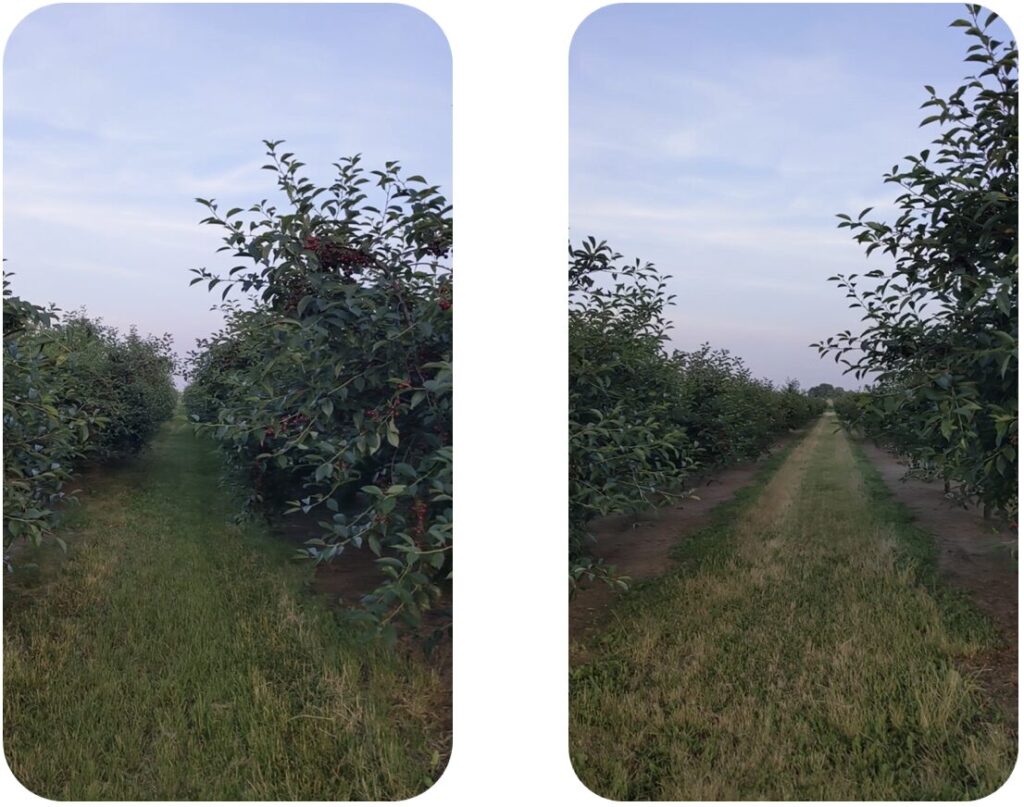
Observations: By late May, intensive shoot growth was evident: canopies of trees planted 3 m apart already overlapped, and in some places even the 5 m row spacing had narrowed due to dense growth. While the control plot also grew, growth lagged behind the treated plots.
In the 2–3 weeks before harvest, pre-harvest drop occurred, while cold damage caused an additional 20–30% loss. Harvest began on June 20. Due to weak industrial demand, manual picking was carried out. In the treated plots, fruit ripened more uniformly and remained harvestable for longer, making repeated picking unnecessary. Average yield reached 20 kg/tree, with fruit size between 23–26 mm. Fruit quality was excellent — suitable for both fresh consumption and processing. About 30% of the harvest was sold directly on the fresh market.
After-effects: Post-harvest, orchard vitality remained strong; early shoot growths reached up to 80 cm. Average yield was nearly 10 t/ha. Foliage remained healthy, without stress symptoms, and by the final spray on August 15, leaf fall was minimal.
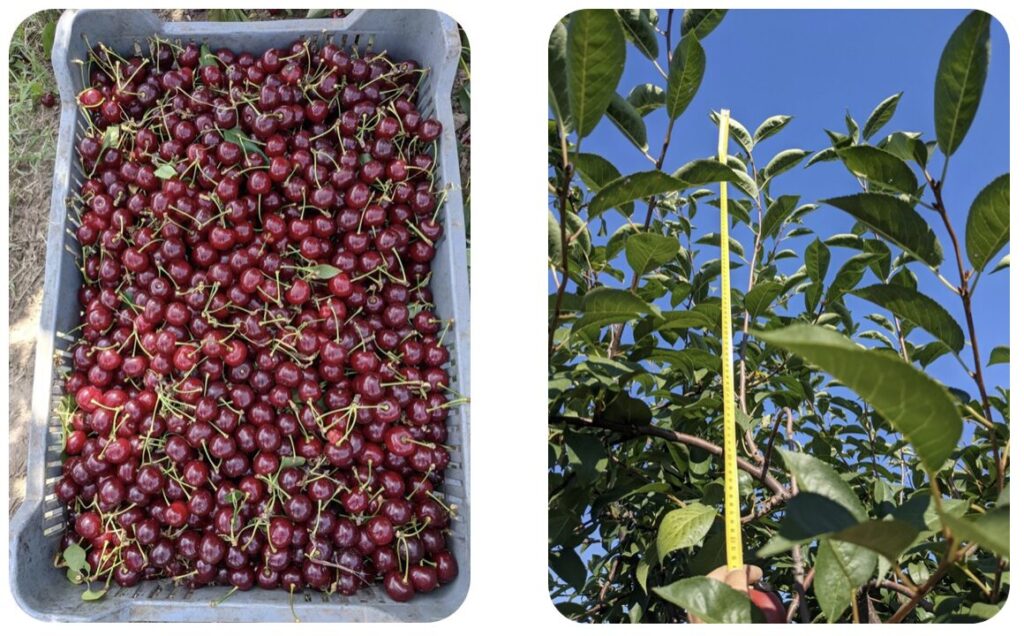
Company: Palatinca Szőlő Kft. — 60 ha contiguous vineyard near Szekszárd, with 15 grape varieties under modern two-cane training, no shoot-thinning.
Trial block: 2 ha Olaszrizling plot, where fruit set and ripening are particularly critical.
Treatment: The product was applied as foliar spray on June 23 and July 7, 2023, at 10 l/ha each time in 200 l/ha spray solution.
Results: In the treated block, cluster closure was satisfactory, and the canopy was dense and healthy. Compared to the adjacent Cserszegi fűszeres vineyard, the treated Olaszrizling showed markedly denser, healthier foliage — expected to translate into both higher yields and better fruit quality.
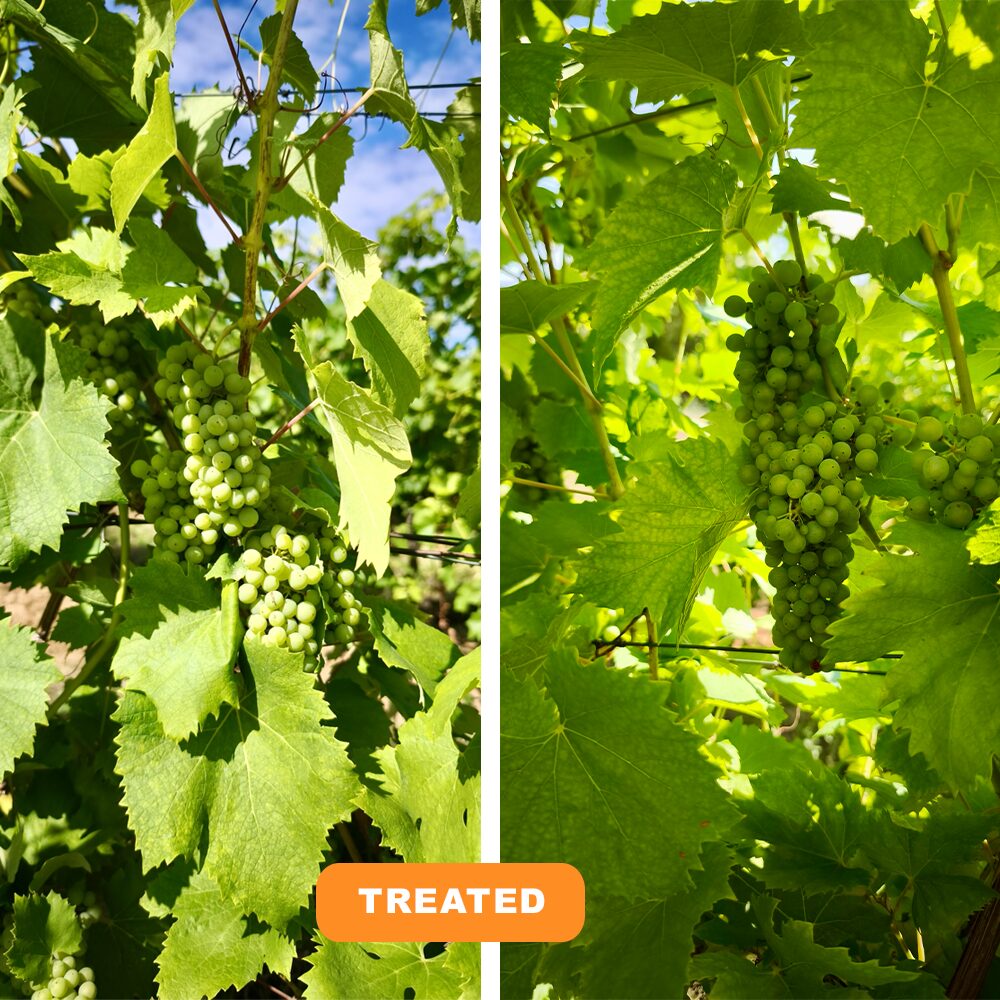
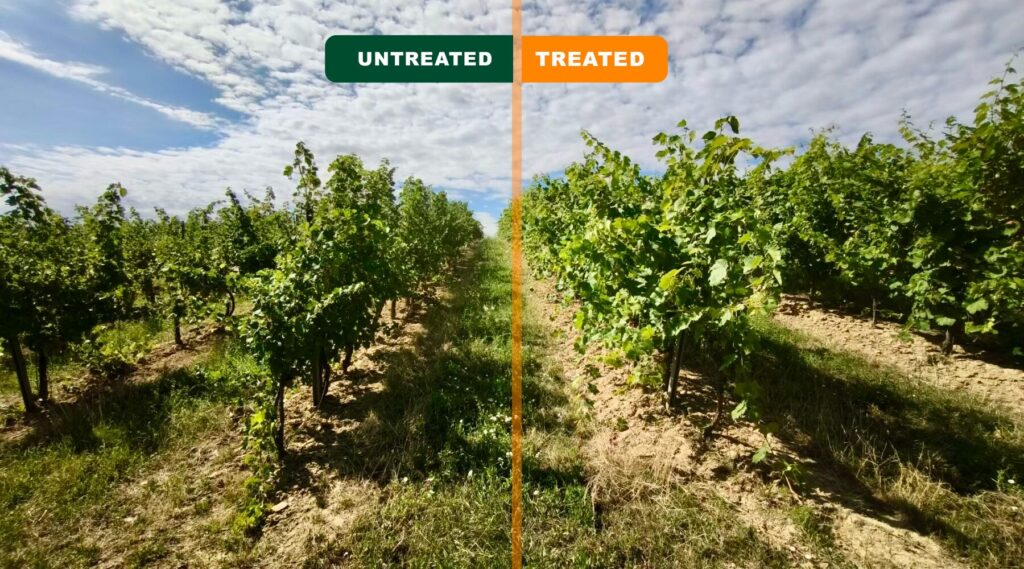
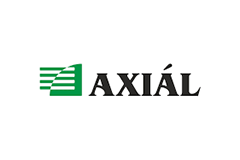
Partner: Axiál Kft.
Responsible persons: Zsolt Pintér (Managing Director), Attila Vitáli (Crop Production Supervisor).
Location: Beled, Hungary.
Treated area: 7 ha in mixed crops; control: 5.22 ha. Humikal Universal liquid formulation was applied.
Observations: Crop development in treated plots was visibly better; grain filling and kernel plumpness improved, and cereals overall appeared fuller and healthier.
Results by crop:
Mode of action: The aqueous extract of lignite/leonardite/brown coal enhances soil colloids and organic matter, thereby improving soil fertility — particularly with regular, repeated application (semi-annually or annually). However, it is emphasized that excessive reliance on nitrogen alone can damage soil ecological balance; nutrient supply should be managed in a balanced, integrated system.
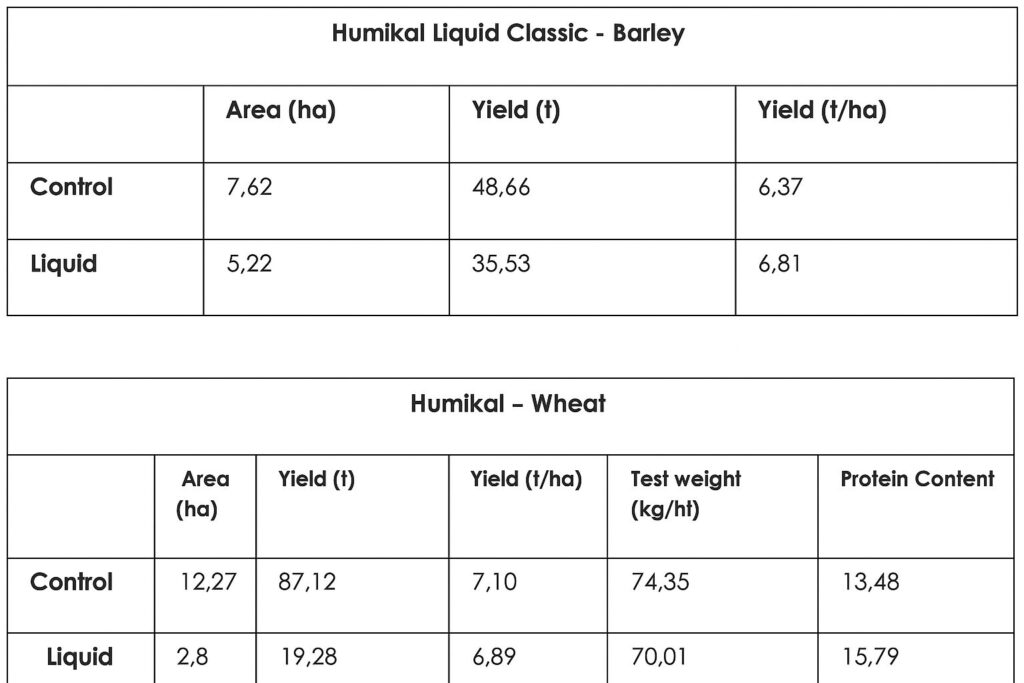
Farmer: Zoltán Nagy, Primary Producer
Location: Outskirts of Újfehértó, Grimbó area
Soil type: Sandy soil, 2 Aranykorona (low fertility value)
Trial plot size: 2.5 hectares
Humikal Universal Classic Granulate
Applied amount: 500 kg
Application time: Second week of April 2025
Application method: Applied with fertilizer spreader
Humikal Universal Classic Liquid
Applied amount: 20 liters in total
Application rate: From the 3rd leaf stage, applied every 8 days — a total of 8 liters of Humikal Universal Classic Liquid per hectare
Other Inputs
In both 2024 and 2025, ammonium nitrate (Pétisó) was applied at 180 kg per hectare.
Yield Results
Average yield in 2024: 2.4 tons per hectare
Average yield in 2025 (with Humikal Universal products): 3.8 tons per hectare
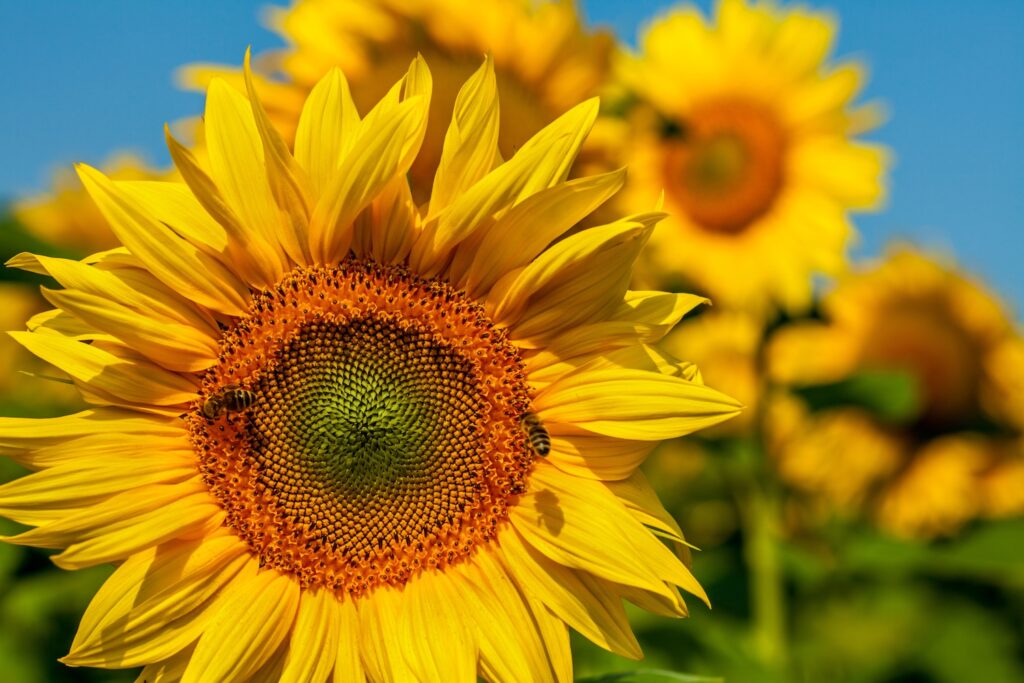
Economic Result
In 2025, the yield increased by 1,600 kg of sunflower per hectare, which — at an average market price of 170 HUF/kg — resulted in an additional income of 272,000 HUF per hectare compared to previous years.
Site: 7539 Szulok, parcel no. 0140/2.
Soil: poor sandy soil with low organic matter and multiple defects; nitrate-sensitive area.
Treatment: Humikal Universal Classic Liquid was applied twice at the beginning of heading, at 2 × 3 l/ha.
Observations: The treated stand already showed visibly improved color, vigor, and tillering in spring. Following foliar applications, spike size and grain color were also superior.
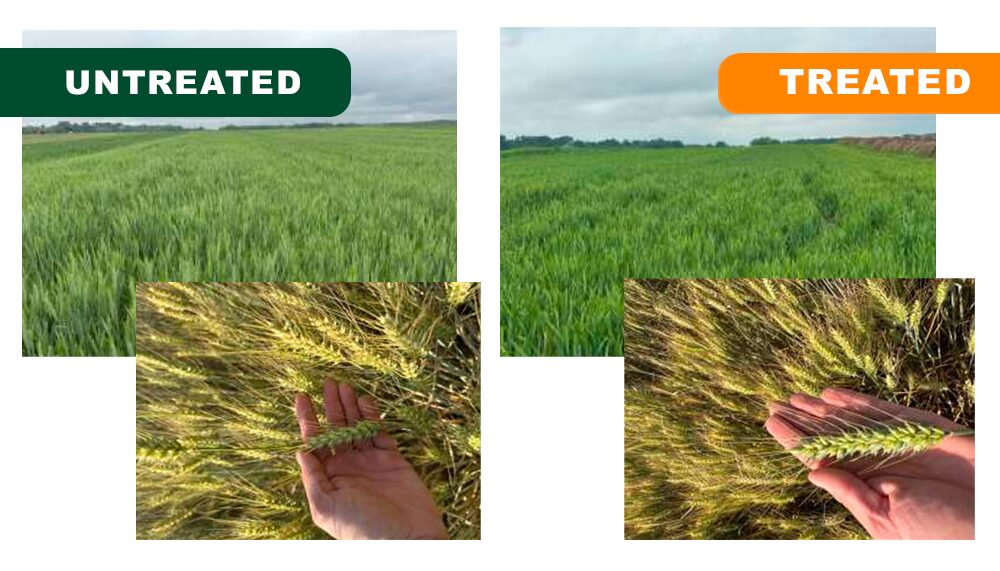
Harvest results: Control yield was 6.1 t/ha, while treated yield reached 7.5 t/ha — a 25% increase, or +1.4 t/ha. With a market price of 73,000 HUF/t, this represented a significant income gain.
Nutrient program: Both treated and control plots received the same base fertilization: 225 kg/ha initially, followed by an additional 150 kg/ha two weeks later. The treated plot then received two foliar sprays at 3 l/ha each at heading.
Soil: very poor sandy soil, with residual effects from previous vineyard/orchard use, including copper and other residues.
Farmer: Kaldenekkel Olivér
Treatment: Humikal Universal granulate at 300 kg/ha. Additional fertilization included 200 kg/ha ammonium sulfate in autumn and 400 kg/ha in spring, prior to granulate application.
Observations: Treated plots showed more uniform, darker green stands and stronger tillering. Where application was uneven, striping and lighter patches appeared.
Harvest results: Control yielded 3,300 kg/ha, while treated plots produced 3,900 kg/ha — an increase of 600 kg/ha. Farmers calculated this as an added income of ~36,000 HUF/ha (600 kg × 60 HUF/kg).
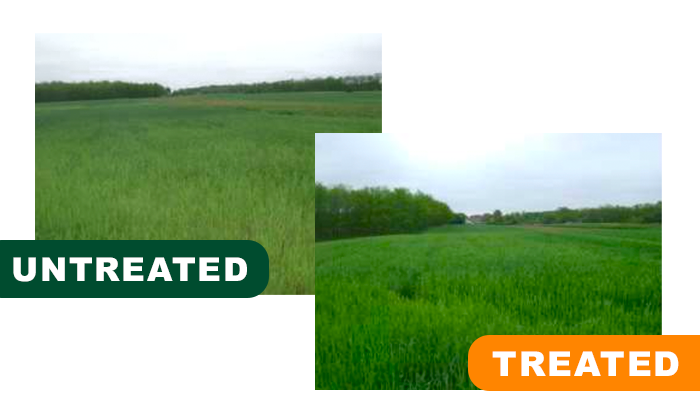
Site: Aba, 1.2 ha semi-modern greenhouse (18 bays × 4.5 m), 5 rows per bay, row length 85 m. Plant spacing: 150 × 30 cm. Plant density: 2.2 plants/m².
Variety: Ardiles Reina grafted on Maxifort rootstock.
Planting date: November 15, 2023. Planned cropping period: Nov 15, 2023 – Dec 10, 2024.
Treatment: The aqueous extract of brown coal/leonardite/lignite was added to the nutrient solution at 6 l/1000 l stock solution (highly concentrated). The fertigation system was set to EC ~3‰ and pH ~5.5.
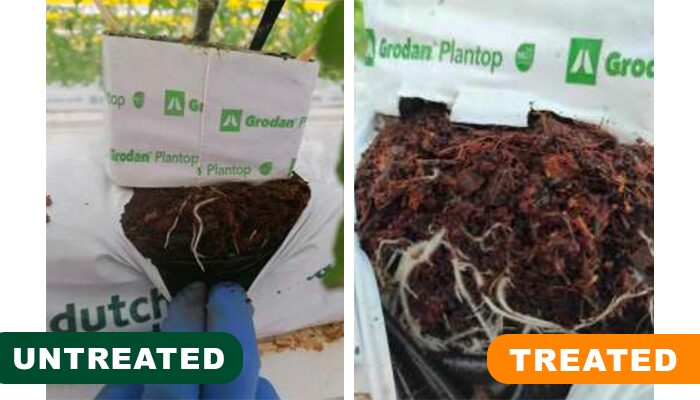
Effects observed:
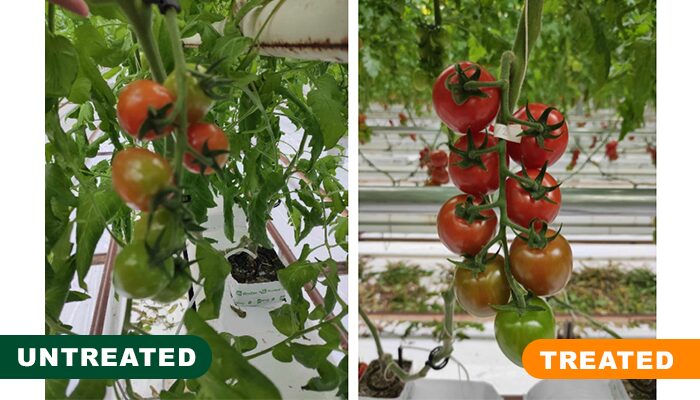
Summary: Regular application of the extract improved yield, plant vigor, and stress tolerance, while supporting earlier fruit set and more uniform ripening. Note on dosage: raising the rate from 6 to 7 l/1000 l led to an undesirable pH increase the following day — strict monitoring of dosage and pH is therefore recommended.
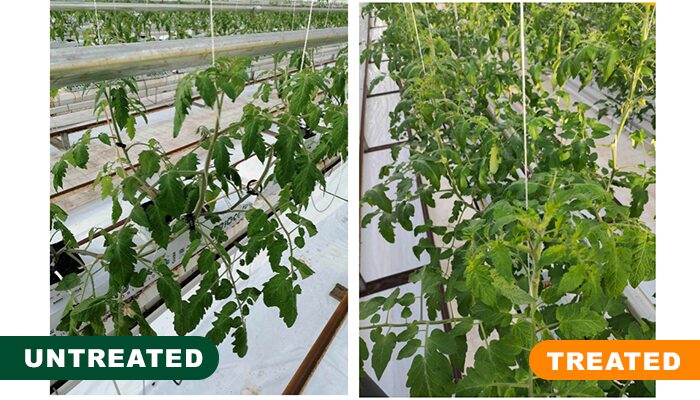
Grower experiences were overwhelmingly positive: several reported faster and healthier seedling development. Examples include:
“I sowed these pepper seeds five weeks ago. They already have their third pair of leaves. Normally this would take two months, and the plants would not be nearly as strong and healthy. Even my houseplants are thriving. I recommend it to anyone who wants chemical-free growing.”
“My garden has never been this beautiful and healthy — thanks to your product. Normally I would have to buy seedlings, but this year I didn’t need to, since my peppers were ready for transplanting in just six weeks. The potatoes are already 50 cm high and budding, and I can start harvesting peas next week. Not to mention how my ornamental plants are flourishing. Thank you!”
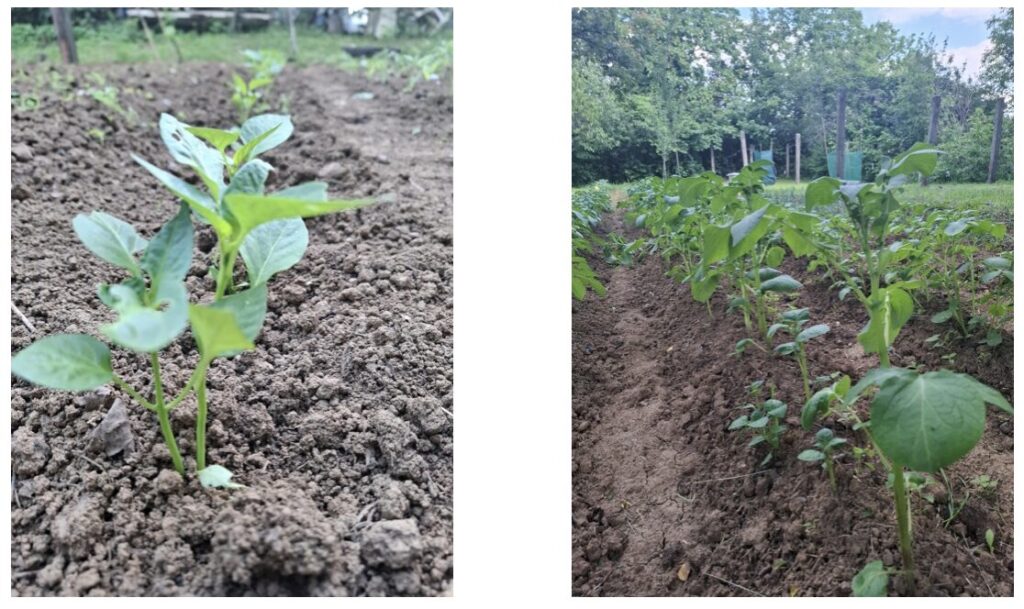
Treatment: After lawn aeration, Humikal Universal granulate was applied.
Observations: Turf and soil showed rapid regeneration. A documented photo series illustrated progress:
Summary: Treated turf regenerated more quickly, with denser coverage and improved aesthetic quality — particularly important in parks and sports areas.
Final Remark
Experimental results across different crops demonstrate that the Humikal product range (granulate and liquid formulations) consistently supports plant development, fruit set, yield, and quality. Effects vary by crop, so application must always be adapted to local soil conditions, weather, and existing fertilization and crop-protection practices. It is recommended to tailor dosages and timing to local conditions and to regularly monitor treatment effectiveness.
